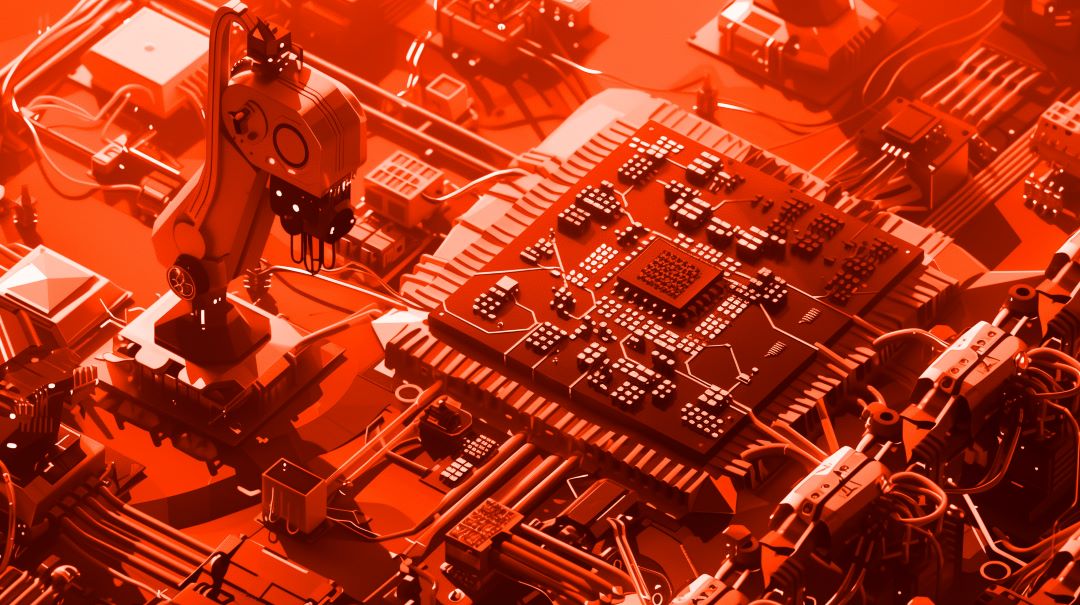Welcome to our weekly news post, a combination of thematic insights from the founders at ExoBrain, and a broader news roundup from our AI platform Exo…
Themes this week

JOEL
This week we look at:
- Google DeepMind’s AlphaChip revolutionising chip design optimisation.
- OpenAI’s transition to a for-profit model and the rapid growth of AI startups.
- Hyperscale investments in AI infrastructure from tech and financial giants.
AlphaChip plays the optimisation game
This week, Google DeepMind unveiled the details behind AlphaChip, an AI system that it turns out has been used to design three generations of Google’s custom Tensor Processing Units (TPUs), powering Gemini and other Google services worldwide. This AI-driven approach to chip design has demonstrated an ability to create layouts in hours, a task that typically takes human engineers weeks or months to complete.
AlphaChip approaches chip design like a strategic game, similar to how DeepMind’s AlphaGo mastered the game of Go. It starts with a blank grid and places components one by one, learning from each decision. The system uses a special type of neural network that understands how chip components interact, allowing it to apply its knowledge across different chip designs. AlphaChip first practices on a variety of existing chip designs, building up its expertise. Then, when tasked with creating a new chip layout, it can work much faster than human designers, considering millions of possible arrangements to find optimal solutions. The breakthrough here is not just the speed, but the quality of the designs – AlphaChip often creates layouts that perform better than those made by human experts, particularly in reducing the total length of wires on the chip, which is crucial for speed and energy efficiency.
AlphaChip’s success extends beyond Google, with other companies like MediaTek adopting similar approaches for their own chip designs. This strategic, AI-powered construction process clearly has many applications beyond just chip design. There is huge potential for AI to tackle other complex optimisation problems through this intelligent trial-and error approach. Could we see AI-designed aircraft, optimised urban layouts, or even AI-engineered molecules for new materials or drugs? The techniques used in AlphaChip could potentially be adapted to a wide range of fields involving intricate trade-offs and interconnected components.
For now, the chips being deployed to Google’s datacentres are increasingly powerful and energy-efficient thanks to AI, and will accelerate the impact of Google’s AI services.
Takeaways: The race is on to harness this AI-hardware feedback loop. The development of AI systems like AlphaChip and Nvidia’s similar usage creates a powerful recursive effect. Whilst pure fabrication improvements slow, and costs become harder to reduce, clever design becomes paramount. But what is more exciting here is that this optimisation playbook has application across industry.

JOOST
Money talks, content walks
One of the biggest developments in AI this week is OpenAI’s decision to transition from a non-profit to a for-profit entity. Under the new structure, Sam Altman, CEO of OpenAI, is poised to gain equity in the organization as it seeks to commercialize its ground breaking technologies. This shift is driven by OpenAI’s enormous infrastructure costs and the need to generate substantial revenues to support ongoing AI research and model development. OpenAI’s transformation is largely seen as a natural evolution for a company that has already reached significant commercial success, with products like ChatGPT becoming the fastest-growing consumer app in history.
However, this transition has sparked controversy (and potentially the departure of the last of the founding team, CTO Mira Murati). One of the most vocal critics is Elon Musk, a co-founder of OpenAI who left the organization in 2018. Musk has publicly condemned OpenAI’s move to a for-profit model, labelling it as “illegal” and in stark contrast to its original mission. His concerns reflect a broader ethical debate about the balance between monetizing AI technologies and maintaining transparency and public accountability. While OpenAI’s pivot may make sense from a financial and operational standpoint, it raises important questions about how AI companies should operate in a market driven by both innovation and profit.
Despite these controversies, the broader AI market continues to expand rapidly, with AI startups scaling at unprecedented rates. According to a recent Financial Times report based on data from Stripe, AI startups are reaching major revenue milestones faster than previous generations of tech companies. The data shows that AI companies are achieving $30 million in annualized revenue in as little as 20 months, compared to the much longer growth periods experienced by software-as-a-service (SaaS) companies in the past.
This remarkable growth reflects the growing demand for AI-driven solutions across industries, from healthcare and finance to media and entertainment. AI startups, many of which are building products that directly integrate machine learning models with everyday business applications, are benefiting from a surge of interest and investment. Companies like OpenAI, Anthropic, and Midjourney have already demonstrated their ability to rapidly build consumer bases and monetize their technologies through subscription models, corporate partnerships, and product licensing agreements.
However, Goldman Sachs has cautioned that this growth may not be as sustainable as it seems. In a recent report, they warned that AI companies are capital-intensive, requiring significant investments in computing infrastructure and cloud storage to run and train large AI models. As a result, profitability may remain elusive for many of these startups, despite their impressive early revenue figures.
Perplexity, the AI search engine, recently announced a revenue-sharing agreement with publishers like Automattic, Der Spiegel, and Time. This marks a shift in the relationship between AI companies and media outlets, signalling that AI platforms are now acknowledging that while revenues grow, they need to compensate content creators. OpenAI has also struck deals with media companies, including The Financial Times, to ensure responsible use of their content. These partnerships suggest that AI companies are becoming more attuned to the legal and ethical implications of using external data to train their models.
Nevertheless, tensions remain high. The media industry is still wary of the power imbalance that AI companies hold, particularly when it comes to monetizing content. Lawsuits over copyright infringement—such as The New York Times’ recent case against OpenAI—underscore the legal uncertainties surrounding the use of proprietary data to train AI models. These legal battles are reminiscent of the early internet era, where search engines and content creators fought over who should benefit from the online distribution of information.
The AI market is growing faster than anyone could have predicted, and while that brings exciting opportunities, it also raises significant questions. OpenAI’s shift to a for-profit model is just one example of the tensions between world-changing innovation and commercialization. While AI startups are generating revenues at an unprecedented rate, the capital-intensive nature of the industry means profitability may still be a distant goal for many.
Takeaways: As this market matures, the key question will be how to unlock innovation while ensuring that the benefits of AI are distributed fairly across industries, creators, and consumers alike.
Infrastructure goes hyperscale
We covered AI infrastructure last week with BlackRock’s launch of an infrastructure fund, and it’s has been another week of multi-billion-dollar investments. BlackRock’s $100 billion is a notable acceleration of the race to deploy essential AI hardware, not least in growing markets like Asia.
One of the most interesting announcements this week comes from Microsoft, which has committed $1.3 billion to expanding AI and cloud infrastructure in Mexico. This investment aims to support inclusive growth by increasing access to technology and fostering digital skills training in the region. Microsoft’s investment aligns with a broader trend of expanding AI infrastructure beyond traditional tech hubs like Silicon Valley. By focusing on emerging markets, Microsoft is positioning itself to drive AI adoption globally, while simultaneously addressing the growing need for digital skills in underserved regions.
This initiative in Mexico highlights a broader strategy: AI infrastructure is not just about powering models—Microsoft believe it’s about creating a foundation for economic growth and technological inclusion. As AI becomes increasingly embedded in everyday business operations, countries and regions with robust infrastructure will be better positioned to take full advantage of AI-driven innovation.
Meanwhile, private equity giant Blackstone is also making moves this space, including a much needed $13.3 billion for a UK datacentre in the Northeast of England. Blackstone’s increased investment in cloud technologies signals a growing recognition of the long-term value in owning and operating AI infrastructure. Blackstone’s strategic move suggest that private equity firms see the building and maintaining of AI infrastructure as a lucrative opportunity to capitalize on the growing demand for data processing, storage, and cloud solutions.
Sam Altman has long emphasized the importance of infrastructure in advancing AI. Reports suggest that OpenAI’s Sam Altman shared a company report with the US administration recently on the benefits of building datacentres of up to 5GW in capacity. This would dwarf any single facility today and consume more than world’s current largest regional market known as ‘datacentre alley’, found in Northern Virginia and consuming some 4GW across over some 400 sites.
Takeaways: Microsoft, BlackRock, Blackstone and others look set to continue to invest in hyperscale datacentres as they prepare for the next phase of AI-driven transformation. Microsoft’s Mexico investment and Blackstone’s UK bet highlight the push to spread AI capabilities beyond traditional tech hubs. Your proximity to AI compute, and 5GW hyperscale facilities, could become as strategically important as your use of the technology itself.

EXO
Weekly news roundup
This week’s news highlights significant advancements in AI technology across various sectors, increased regulatory scrutiny, and ongoing developments in AI hardware and research, showcasing the rapid evolution and growing impact of AI in multiple domains.
AI business news
- Meta’s top five announcements at ‘Connect’ event (Provides insights into Meta’s latest AI-driven innovations and strategic direction.)
- Google’s NotebookLM enhances AI note-taking with YouTube, audio file sources, sharable audio discussions (Demonstrates the evolution of AI-powered productivity tools for content creators and researchers.)
- Google paid $2.7 billion to bring back an AI genius who quit in frustration (Highlights the intense competition for top AI talent and the high stakes in AI development.)
- Audible experiments with new AI features for tailored audiobook recommendations (Shows how AI is being leveraged to enhance user experience in the digital content industry.)
- Airtable’s new updates simplify the creation of no-code apps with integrated generative AI (Illustrates the growing trend of integrating AI into no-code platforms, democratising app development.)
AI governance news
- FTC sues five AI outfits – and one case raises questions (Indicates increasing regulatory scrutiny of AI companies and potential legal challenges ahead.)
- Cloudflare reins in AI scraper bots with new Audit panel (Showcases efforts to address AI-related security concerns in web infrastructure.)
- Amazon’s $4 billion Anthropic deal cleared by UK watchdog (AMZN) (Demonstrates regulatory approval for major AI investments, potentially shaping the industry’s future.)
- Early sign-ups to EU’s AI pact include Amazon, Google, Microsoft, and OpenAI — but Apple and Meta are missing (Highlights the varying approaches of tech giants to AI regulation and cooperation.)
- Here is what’s illegal under California’s 9 (and counting) new AI laws (Provides crucial information on emerging AI regulations in a key tech hub.)
AI research news
- NASA, IBM want you to fine-tune their new AI climate model (Showcases collaborative efforts in using AI for critical environmental research.)
- The most capable open source AI model yet could supercharge AI agents (Highlights advancements in open-source AI that could accelerate development of AI agents.)
- Boosting healthcare LLMs through retrieved context (Demonstrates progress in enhancing AI models for specialised healthcare applications.)
- HelloBench: evaluating long text generation capabilities of large language models (Introduces a new benchmark for assessing LLM performance in extended text generation.)
- RACER: rich language-guided failure recovery policies for imitation learning (Presents advancements in AI’s ability to learn from and recover from failures.)
AI hardware news
- Nvidia supplier SK Hynix’s shares rally as mass production of latest HBM chips begins (Indicates progress in AI chip production, potentially easing supply constraints.)
- Arm rejected by Intel after approaching it about buying product unit (Reveals strategic moves in the AI chip industry and potential shifts in market dynamics.)
- Intel introduces top-end Xeon 6900P server processors with up to 128 cores (Showcases advancements in high-performance computing hardware crucial for AI workloads.)
- Microsoft’s Three Mile Island deal signals a broader nuclear comeback (Highlights the increasing energy demands of AI and potential solutions.)
- Broadcom debuts Sian2 chip for powering AI clusters’ optical networks (Demonstrates advancements in networking hardware to support growing AI infrastructure needs.)




